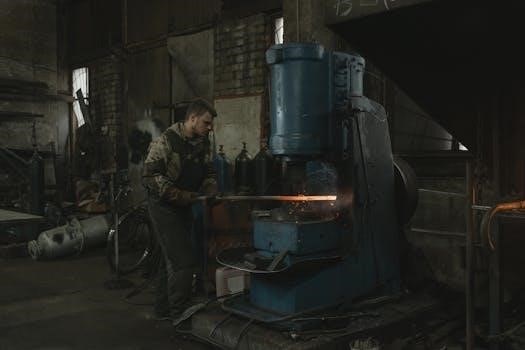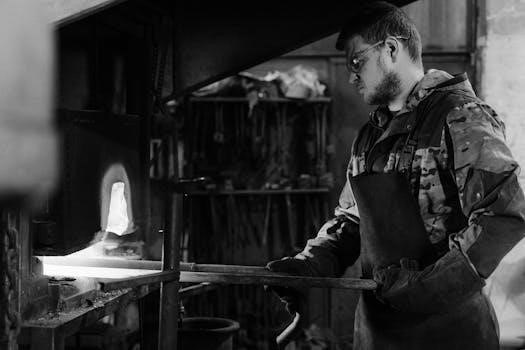Payne Furnace Manual⁚ An Overview
Payne furnace manuals provide essential guidance for homeowners and technicians․ These documents cover safety, operation, maintenance, and troubleshooting․ Accessing the correct manual ensures proper furnace function and longevity․ Refer to the manual for model specific details․
Understanding Payne Furnace Models
Understanding Payne furnace models is crucial for correct operation and maintenance․ Payne offers various models, including induced combustion and condensing gas furnaces․ Models differ in size (040-140 series), efficiency (AFUE ratings), and features (single-stage, two-stage)․ Identifying your specific model is the first step in finding the right manual․ Manuals often include model-specific installation, start-up, and service instructions․
Refer to the furnace rating plate for model information․ The PG series (e․g․, PG95ESA, PG9MTAV) represents a range of Payne furnaces․ Knowing your model enables you to access relevant wiring diagrams, parts lists, and troubleshooting guides․ Proper model identification ensures accurate maintenance and repair․

Safety Precautions
Safety precautions are paramount when dealing with Payne furnaces․ These guidelines cover potential hazards like fire, explosion, and carbon monoxide poisoning․ Always consult the manual before any installation, maintenance, or repair work․
General Safety Guidelines
General safety guidelines for Payne furnaces include preventing flammable materials near the unit․ Never store gasoline or other combustible liquids close by․ If you smell gas, do not light any appliances or use electrical switches; contact your gas supplier immediately․ Regular inspections by qualified technicians are crucial․ Ensure adequate airflow for combustion and ventilation to prevent carbon monoxide buildup․ Never operate a furnace that has been flood-damaged․ Always follow manufacturer’s instructions and warnings to avoid injury, death, or property damage․ Keep the furnace area free of obstructions and insulating materials․
Carbon Monoxide Detection
Carbon monoxide (CO) detection is vital for Payne furnace safety․ CO is an invisible, odorless, and toxic gas․ Payne recommends installing a CO alarm in your home, even without gas appliances․ Place the alarm in a living area, away from gas appliances, following the alarm manufacturer’s instructions․ Regular checks of the alarm are essential․ If the alarm sounds, evacuate immediately and call emergency services․ Ensure the furnace vents properly to prevent CO buildup․ Annual inspections by a qualified technician can identify and address potential CO hazards․
Operation and Maintenance
Operation and maintenance of your Payne furnace are crucial for efficiency and longevity․ Regular maintenance, including filter replacement and inspections, ensures optimal performance․ Consult the owner’s manual for specific guidelines and schedules․
Routine Maintenance Tasks
Routine maintenance is vital for Payne furnace longevity and efficiency․ Regular tasks include inspecting the filter monthly and cleaning or replacing it when needed․ Ensure adequate airflow to the furnace for efficient combustion and safe ventilation․ Keep the furnace free from insulating material․ Schedule annual inspections by a qualified technician to examine the vent system․ Check for error codes on the digital display․ Verify proper gas supply and electrical connections․ Ignoring these tasks may lead to malfunctions or safety hazards․ A well-maintained furnace operates safely and efficiently, saving energy and preventing costly repairs․
Filter Replacement Guide
Replacing your Payne furnace filter is a simple yet crucial maintenance task․ A dirty filter restricts airflow, reducing efficiency and potentially damaging the unit․ Consult your manual for the correct filter size and type․ Turn off the furnace before replacing the filter․ Remove the filter access door and slide out the old filter․ Insert the new filter, ensuring the airflow arrow points in the correct direction․ Replace the access door securely․ Check the filter monthly and replace it every one to three months, depending on usage and air quality․ Regular filter replacement maintains optimal furnace performance․

Troubleshooting Common Issues
Payne furnace manuals offer guidance for common problems․ Error codes, ignition failures, and airflow restrictions are addressed․ The manual provides troubleshooting steps to resolve these issues․ Consult a professional if problems persist․
Identifying Error Codes
Payne furnace manuals include comprehensive error code lists, crucial for diagnosing issues․ These codes, displayed on the furnace’s digital interface, pinpoint specific malfunctions․ The manual cross-references each code with potential causes and solutions․ Understanding these codes helps homeowners communicate effectively with technicians․
For example, a specific code might indicate a flame sensor problem, while another could signal an issue with the gas valve․ Always consult your Payne furnace manual to accurately identify the error code․ Ignoring error codes can lead to further damage․
Addressing Ignition Problems
Payne furnace manuals offer valuable insights into troubleshooting ignition failures․ The manual outlines potential causes, ranging from a faulty hot surface igniter to a blocked gas valve․ It also provides step-by-step instructions for safely inspecting and resolving common ignition issues․
A frequent cause is a dirty flame sensor, which the manual details how to clean․ The Payne furnace manual also emphasizes the importance of checking the gas supply and electrical connections․ Remember to always prioritize safety when dealing with gas appliances․

Installation Guide Overview
The Payne furnace installation guide provides crucial instructions for proper setup․ It covers venting, gas connections, and electrical requirements, all vital for safe and efficient operation․ Always consult the manual before installation․
Venting Requirements
Proper venting is critical for Payne furnace safety and efficiency․ The installation manual details specific requirements for both direct (two-pipe) and non-direct (one-pipe) vent systems․ Venting must adhere to local codes and furnace specifications․ Incorrect venting can lead to carbon monoxide buildup․ Use approved materials and follow the manufacturer’s guidelines precisely․
Ensure the vent system is properly sealed and free from obstructions․ Inspect the vent system annually for any signs of damage or corrosion․ Replace any damaged components immediately․ Refer to the Payne furnace manual for detailed diagrams and instructions on proper venting techniques․ This ensures safe operation and prevents hazards․
Gas Connection Instructions
Connecting the gas supply to a Payne furnace requires strict adherence to safety protocols․ A qualified technician must perform the gas connection․ Always shut off the main gas supply before beginning any work․ Use approved gas piping and fittings․ Ensure all connections are tight to prevent leaks․ Consult the Payne furnace manual for specific gas pressure requirements․
After connecting, test all joints with a gas leak detector or soap solution․ Never use an open flame to check for leaks․ The manual provides detailed diagrams of proper gas line connections․ Improper connections can lead to gas leaks and explosions․ Verify the furnace is using the correct type of gas․

Downloading Payne Furnace Manuals
Payne furnace manuals are readily available online for download․ Access them through the official Payne website or reputable HVAC manual repositories․ Ensure the manual matches your specific furnace model for accurate information․
Official Payne Website
The most reliable source for Payne furnace manuals is the official Payne website․ Navigate to the “Support” or “Downloads” section, typically found in the website’s header or footer․ Search for your specific model number using the search bar or a product directory; Ensure you download the correct manual corresponding to your furnace model, as manuals vary․ The official website guarantees authentic and up-to-date documentation․ Payne’s website provides access to installation, operation, and service manuals․ Download these manuals directly from Payne to avoid outdated or incorrect information from third-party sources․
ManualsLib and Similar Resources
ManualsLib and similar online platforms offer alternative avenues for accessing Payne furnace manuals․ These websites host a vast collection of user manuals, service guides, and installation instructions for various appliances, including Payne furnaces․ Search by model number or product type to locate the desired manual․ While convenient, ensure the manual’s authenticity and applicability to your specific furnace․ Compare information with official Payne documentation when possible․ Exercise caution when downloading from unofficial sources to avoid malware or incorrect information․ ManualsLib provides a user-friendly interface for browsing and downloading manuals, although availability may vary depending on the model․